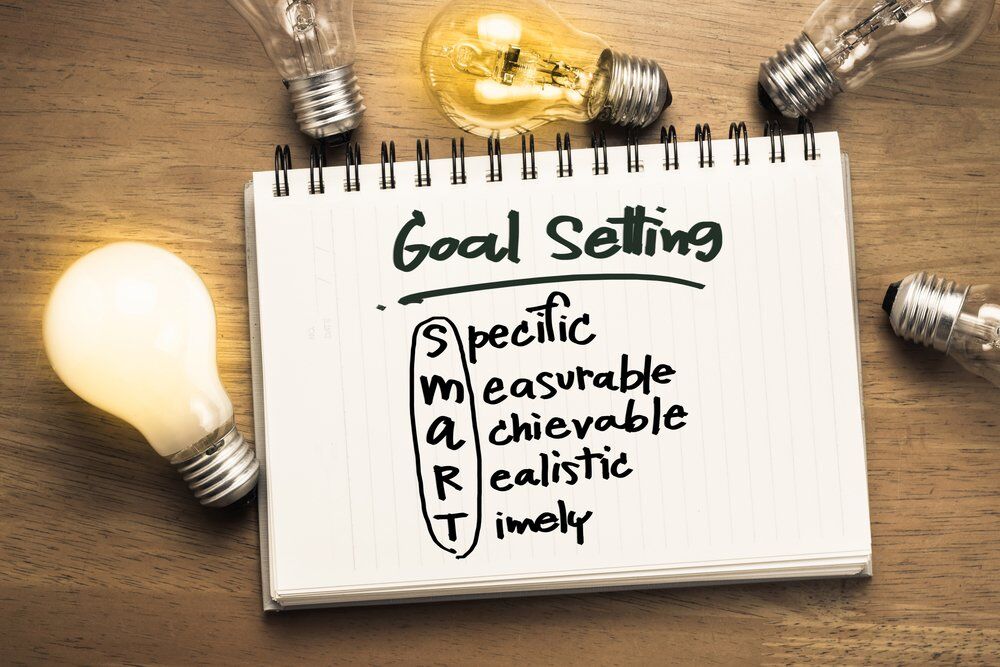
SMART Goals – How to Achieve Your Fitness and Body Goals the SMART Way
If you find yourself setting health and fitness goals with the best intentions but never achieve your desired results, then it’s time to get SMART. Whether you’re an experienced athlete or a complete beginner to training, it’s essential that you set yourself personal goals in order to progress and achieve your fitness goals. 
For example, just setting a goal to “get fitter” is far too vague because you have no end goal in place and tracking your progress would be incredibly difficult as being ‘fit’ could relate to any number of factors such as strength, endurance, flexibility, recovery, body composition etc. Simply put, if your goals are not measurable, achieving success will be incredibly difficult.
This is where SMART goals hold the key to success! Broken down into five quantifiable factors; SMART stands for specific, measurable, achievable, realistic and timely – all of which are important factors in reaching a fitness goal. SMART goals help you to stay on track and serve as a reminder of your priorities, to keep you motivated and consistent with your training and diet.
Now, let’s get SMART and break down the five elements so you can put them into action setting your own fitness goals:
SPECIFIC
Above all else, you need to first establish yourself a clear goal – the more specific you can be with your goal, the more likely you’ll be to achieve success. For example, instead of setting yourself a goal to ‘lose my muffin top’ or ‘get a six pack’, opt for something such as ‘lose an inch from my waist this month’ and focus on that. Once you achieve that goal, you can then set yourself another goal.
Avoid vague, unclear goals such as ‘I want to lose weight’ or ‘I want to get healthy’ as you won’t be working towards achieving a specific outcome, and will therefore be much more likely to give up sooner.
MEASURABLE
This is where you establish exactly how you’ll measure your progress. An example of a measurable goal would be ‘lose half a stone’. This goal is quantifiable as you can track your progress in several ways, such as monitoring your weight, measurements and taking regular progress pictures. This gives you a definite way of knowing when you have achieved your goal.
ATTAINABLE/ACHIEVABLE
While setting bigger, long-term goals can be helpful to motivate you towards a future ‘end goal’; in order to progress and stay on track, you must choose a more achievable, smaller goal to begin with. When you start with small, achievable goals such as ‘run for 10 minutes without stopping’, you’ll achieve early wins which encourages you to stick with it and remain consistent. If you begin with something overly ambitious, it can become discouraging as you won’t be seeing results or making progress as fast as you would like, which may cause you to give up,
For example, losing 3 stone in a month just isn’t realistic, so you’re much better off setting smaller goals that are within close reach to remain motivated and keep you on track to success.
REALISTIC
By setting unrealistic goals, all you are doing is fooling yourself. If your goal is too extreme or unrealistic, this will lead to you losing all motivation as you ultimately fail to achieve these goals. Nobody wants to feel like a failure or a quitter, so do yourself a huge favour by setting a goal that you truly know and believe that you can achieve in the time frame you are setting yourself. By setting yourself realistic and tangible goals, you will remain much more inspired, motivated and driven towards reaching them!
TIMELY
You must once again be honest with yourself when it comes to what you can realistically accomplish in a particular time frame. Once you have established what your goal is, you should set yourself a deadline for when you plan to achieve this. You need to be firm when it comes to setting a deadline as this creates a sense of urgency and will incentivise you further to stay on track.
It’s also important to keep your time frame within sight. If your deadline is 6 months down the line, you may not feel the same level of urgency or motivation to get started immediately. So, instead of setting one 6-month goal, break it up into 3 smaller goals, each with a 2 month deadline instead.
THE TAKE HOME:
Now you have your goal firmly set in place, it’s time to put those plans into action. No matter what your goal is, you can create a plan of action to get yourself to where you want to be. However, you must hold yourself accountable for your choices and the actions you take that will help you to get your desired results. Holding yourself accountable for your goals is essential to maintain consistency in the long-term and will help you to successfully achieve your goals.
By approaching your fitness goals using the SMART method and following the five key principles discussed above, you can’t fail but to improve your health, wellbeing and be well on your way to success… one SMART goal at a time.


No Comments yet!